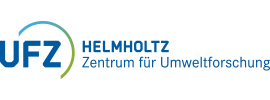Details zur Publikation |
| Kategorie | Textpublikation |
| Referenztyp | Zeitschriften |
| DOI | 10.1016/j.envres.2025.123037 |
Lizenz  |
|
| Titel (primär) | Real-life per- and polyfluoroalkyl substances mixture impairs placental function: insights from a trophoblast spheroid model |
| Autor | Xia, Y.; Fu, Q.; Voss, H.; Fest, S.; Arnold, S.; Bauer, M.; Fink, B.; Zenclussen, A.C.; Stojanovska, V. |
| Quelle | Environmental Research |
| Erscheinungsjahr | 2025 |
| Department | IMMU; EAC |
| Band/Volume | 287 |
| Seite von | art. 123037 |
| Sprache | englisch |
| Topic | T9 Healthy Planet |
| Supplements | Supplement 1 |
| Keywords | PFAS mixture; Placenta; Endocrine disrupting chemicals (EDCs); 3D cell culture; β-hCG; Trophoblast gene expression |
| Abstract | Per-
and polyfluoroalkyl substances (PFAS) are persistent
endocrine-disrupting chemicals (EDCs) linked to adverse reproductive
outcomes. While the placenta is a known target of PFAS toxicity, most in vitro
studies use two-dimensional (2D) cell culture models, often focusing on
late-pregnancy tissue or blood PFAS concentrations and examining single
compound exposures. In this study, we measure placenta PFAS
concentrations in early pregnancy and design a placenta-relevant PFAS
mixture to assess its impact on trophoblast function using a
three-dimensional (3D) trophoblast spheroid model. PFAS levels in
first-trimester placental tissue were quantified using liquid
chromatography/triple quadrupole mass spectrometry. Six PFAS:
perfluorononanoic acid (PFNA), perfluorooctanesulfonic acid (PFOS),
perfluorobutanoic acid (PFBA), perfluorooctanoic acid (PFOA),
perfluorohexanesulfonic acid (PFHxS), and perfluorodecanoic acid (PFDA);
were selected based on their placenta concentrations and relevance to
pregnancy complications to design the placenta real-life PFAS mixture.
Next, trophoblast spheroids were propagated from two different cell
lines, JEG-3 and HTR-8/SVneo, to assess the effects of PFAS mixture on
trophoblast viability, apoptosis, invasion, hormone production, and gene
expression. While trophoblast spheroid viability remained largely
unaffected, we observed changes in trophoblast function. PFAS exposure
significantly increased invasiveness in JEG-3 spheroids at 48 h, but
markedly reduced it in HTR-8/SVneo spheroids at 96 h across varying
concentrations. Additionally, pregnancy-specific hormone e.g. β-hCG
production declined after 48 h of PFAS mixture exposure in JEG-3
spheroids. Gene expression analysis revealed altered apoptosis and
proliferation pathways in both trophoblast spheroids. Overall, our study
highlights that physiologically relevant 3D trophoblast models can
contribute to the broader comprehension of PFAS-associated reproductive
health risk assessments. |
| dauerhafte UFZ-Verlinkung | https://www.ufz.de/index.php?en=20939&ufzPublicationIdentifier=31419 |
| Xia, Y., Fu, Q., Voss, H., Fest, S., Arnold, S., Bauer, M., Fink, B., Zenclussen, A.C., Stojanovska, V. (2025): Real-life per- and polyfluoroalkyl substances mixture impairs placental function: insights from a trophoblast spheroid model Environ. Res. 287 , art. 123037 10.1016/j.envres.2025.123037 |
|
